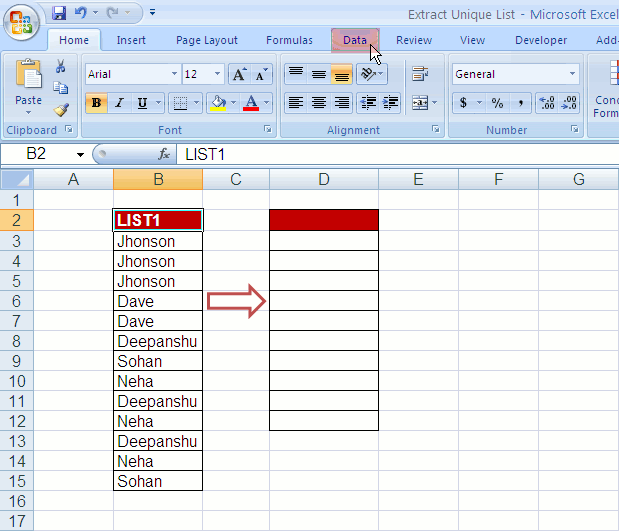Excel Text Extraction: Simple Steps to Extract Cell Data

If you often find yourself needing to extract specific cell data from Excel spreadsheets, you're not alone. Whether it's for data analysis, reporting, or simply for organizing information, knowing how to efficiently extract data from Excel cells is invaluable. This article will guide you through the straightforward steps to extract text from Excel cells, helping you to streamline your workflow and enhance your data management skills.
Basic Techniques for Data Extraction
Let's begin with some basic methods for extracting data from Excel:
- Manual Copying: The simplest approach is to select the cell, copy it, and then paste it where needed.
- Using Formulas: Excel offers various formulas to retrieve specific parts of text from cells. For example:
- LEFT: Extracts a specified number of characters from the left of the cell text.
- RIGHT: Grabs characters from the right side of the text.
- MID: Allows you to extract any portion of text starting from a specific character position.
- Data Tools: Using features like Text to Columns for delimited data extraction.
📝 Note: These methods are excellent for small data sets or for ad-hoc extractions. For bulk or automated processes, consider programming or advanced functions.
Using Excel Formulas for Extraction
Here's how to use some of the most common formulas for text extraction:
- LEFT:
=LEFT(A1, 5)will pull the first five characters from cell A1. - RIGHT:
=RIGHT(A1, 5)extracts the last five characters. - MID: To get characters from positions 3 to 5 in cell A1, use
=MID(A1,3,3). - FIND: Useful with MID or RIGHT to locate specific text within cells, like
=MID(A1, FIND("-", A1)+1, 4)to extract 4 characters after a hyphen.
📝 Note: Understanding the syntax and limitations of these functions will significantly improve your data extraction process.
Advanced Techniques
Beyond basic formulas, here are some advanced ways to extract text:
- Conditional Extraction: Use functions like
IForCHOOSEto conditionally extract data based on specific criteria. - Combining Functions: Combine LEFT, RIGHT, MID, FIND, and other functions to handle complex text strings.
- Using VBA: For repetitive tasks, writing a macro in VBA (Visual Basic for Applications) can automate data extraction.
Here is an example of how you might combine functions:

| Function | Use | Example |
|---|---|---|
| MID | Extract middle portion of text | =MID(A1,FIND("-", A1)+1, LEN(A1)-FIND("-", A1)) |
| LEFT | Extract left part of text | =LEFT(A1,FIND("-", A1)-1) |
| RIGHT | Extract right part of text | =RIGHT(A1, LEN(A1)-FIND("-", A1)) |
📝 Note: Combining functions can be powerful but requires a good grasp of Excel formulas.
Data Extraction for Large Datasets
For dealing with large datasets, here are some efficient methods:
- Pivot Tables: Ideal for summarizing data without extracting text per se, but useful for initial data analysis.
- Power Query: Excel's powerful tool for transforming, merging, and extracting data from multiple sources.
- VLOOKUP/HLOOKUP: To look up and extract data from one part of a large dataset to another.
Using Power Query can be particularly effective:
- Select your data range or entire table.
- Go to the 'Data' tab and click 'From Table/Range'.
- Use the Query Editor to filter, split, or transform your data.
- Once you've set up your transformations, click 'Close & Load' to get the transformed data into a new sheet.
📝 Note: Power Query requires some learning but can dramatically increase your efficiency with large data sets.
To wrap things up, mastering the extraction of text from Excel cells can significantly enhance your ability to manage and analyze data. From basic copying and pasting to advanced use of formulas, VBA, and Power Query, there's a range of techniques suitable for different needs. Remember, the right tool depends on the task at hand; for simple tasks, a formula might suffice, but for more complex or repetitive work, consider using macros or Power Query. With these skills, you'll be able to transform raw data into actionable insights with greater efficiency and accuracy.
What are the simplest ways to extract text from an Excel cell?
+The simplest methods include manual copying and pasting or using basic Excel functions like LEFT, RIGHT, and MID to extract text based on position within the cell.
Can I automate data extraction in Excel?
+Yes, you can automate data extraction using VBA (Visual Basic for Applications) or Power Query for more complex, large-scale data manipulation.
How do I extract only specific text from cells?
+Use Excel’s search functions like FIND or SEARCH in combination with extraction functions like MID to isolate and extract text based on specific characters or patterns.



